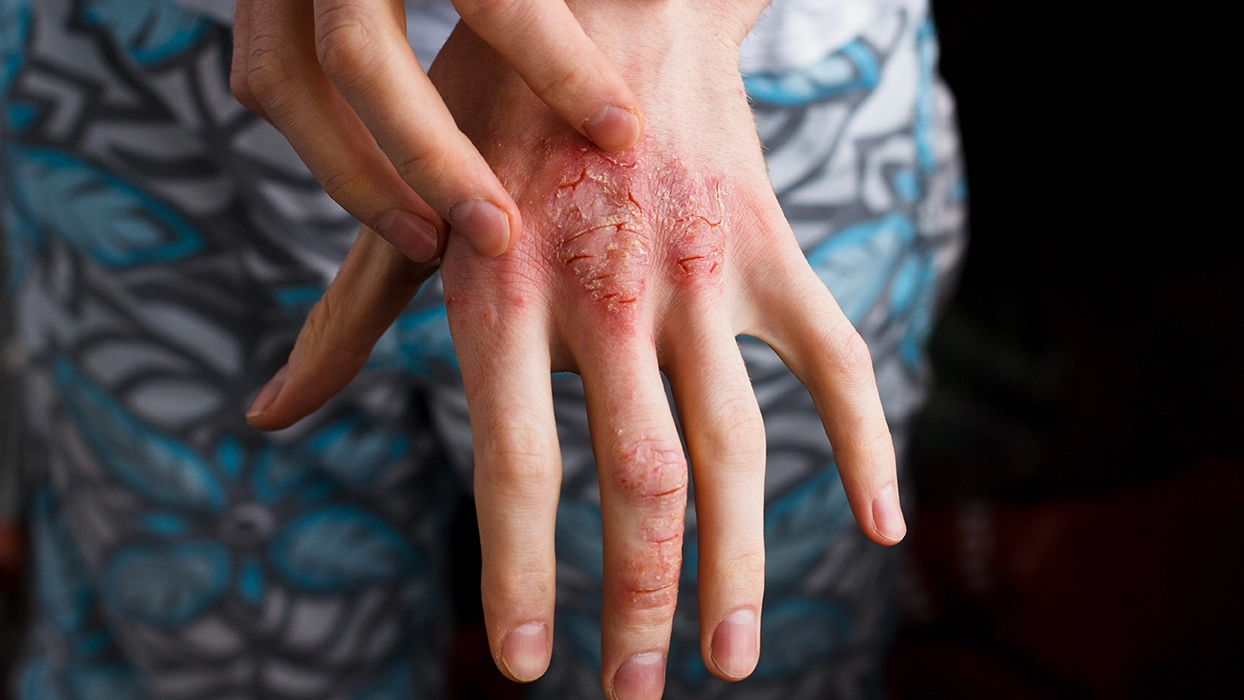Speaker: Marcus Maurer
Chronic inducible urticaria (CIndU) is a group of chronic conditions lasting over six weeks, where wheals and angioedema occur exclusively in response to specific, reproducible triggers. These triggers can be physical, like scratching, cold, or sunlight, or non-physical, such as cholinergic, contact, or aquagenic stimuli. The majority of cases (90%) involve symptomatic dermographism, followed by cold and cholinergic urticaria, which are common in children. Unlike chronic spontaneous urticaria, where triggers like stress or infection are inconsistent, CIndU always responds predictably to specific triggers. The goal is to understand how to detect, diagnose, confirm, and manage these conditions.
CIndU accounts for about a quarter of chronic urticaria cases, with around 20% of patients also having both chronic spontaneous urticaria and CIndU. The most common types, in order, are symptomatic dermographism, cold urticaria, and cholinergic urticaria, prevalent in both children and adults. The exact cause of CIndU is unknown, but it involves mast cell degranulation triggered by specific stimuli, releasing histamine and other agents that activate sensory nerves. Diagnosis requires thorough patient history, provocation testing, and measuring skin sensitivity to triggers. Effective management includes assessing disease activity, impact, and control, using tools like the urticaria control test. Finally, an organized approach to treatment is essential.
To diagnose and treat CIndU, start by confirming that patients can induce wheals through specific triggers, such as scratching, cold, or physical pressure, and then assess their skin's sensitivity using tools like a dermographometer, which measures varying scratch intensities to determine the trigger threshold. The treatment goal is to eliminate all symptoms until the disease resolves spontaneously, applicable to both children and adults. While current treatments are limited, primarily involving antihistamines, new therapies are emerging, especially for antihistamine-resistant patients. Effective management requires intensifying treatment for poorly controlled cases, indicated by a UCT score below 12, aiming for perfect disease control reflected by a UCT score of 16. Regular assessment of disease activity, impact, and control is crucial to ensure optimal patient outcomes.
For diagnosing symptomatic dermographism, perform the test on the forearm and read the results after ten minutes. If no wheal appears by then, it won't appear later, indicating no symptomatic dermographism. Use a dermographometer or Frick test to measure the threshold. Document findings using the appropriate matrix. Assess disease activity with the symptomatic demographism activity score, and for quality of life, use the SD-QOL, while the UCT works universally. In cases where provocation testing doesn't produce typical responses, consider atypical forms like food-dependent symptomatic dermographism. For treatment, second-generation antihistamines are preferred, with omalizumab as an alternative for resistant cases. Omalizumab often yields either complete or no response, indicating varied IgE dependency. Emerging treatments like barzolvolimab aim to reduce mast cell numbers, showing promise in ongoing clinical trials.
To diagnose cold urticaria, ask patients if cold exposure triggers wheals. If confirmed, perform a standardized provocation test by placing an ice cube in a water-filled bag on the skin for five minutes, then observe for wheal development. For assessing temperature thresholds, use the TempTest device, which can measure reactions to various temperatures, affecting daily activities based on sensitivity levels. Documentation and evaluation of disease activity, impact, and control are crucial. Remember that about one-third of cold urticaria patients risk anaphylaxis in cold water, necessitating careful management, especially in children. Treatment primarily involves antihistamines, though not all patients respond. Omalizumab is effective for many but not all, offering quick, sustained relief with potential relapses. Emerging treatments like mast cell inhibitors barzolvolimab show promising results by significantly reducing mast cell numbers.
To diagnose cholinergic urticaria, inquire if sweating induces wheals. Provocation testing, such as exercise, confirms the diagnosis, with incremental pulse-controlled ergometry being a straightforward protocol. Passive warming post-exercise helps rule out exercise-induced anaphylaxis. Documentation is crucial, utilizing the same sheet for consistency. Disease activity, impact, and control are assessed using the cholinergic urticaria activity score, quality of life questionnaire, and UCT. Antihistamines are often ineffective, especially in children, necessitating the use of omalizumab, which yields varied responses.
Key takeaway: consistently ask about wheal induction, confirm the response, monitor disease activity, impact, and control for effective management.
European Academy of Allergy and Clinical Immunology (EAACI) Congress 2024, 31st May-3rd June, Valencia, Spain

.svg?iar=0&updated=20230109065058&hash=B8F025B8AA9A24E727DBB30EAED272C8)

